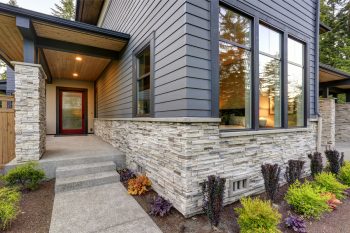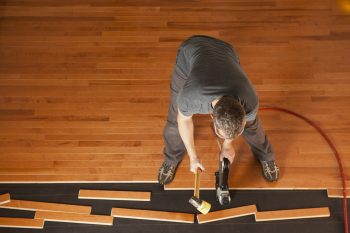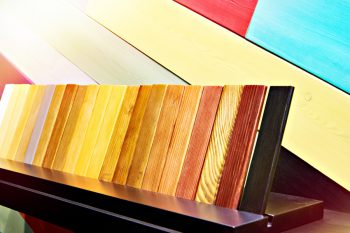
Imagine spending thousands of dollars on flooring only to realize that the color does not fit right. Choosing the right floor color is a daunting task.
With so many options available in the market, picking a color for your floor can overwhelm you quickly.
Should you choose a color based on the color palette of your room? Or lighting? Should you go for your personal preference regardless of anything, or you follow a theme?
All these questions will leave you perplexed. But don’t be worried—a handful of things you need to consider while picking the right color for your flooring.
They will assist you in narrowing down your options and selecting the perfectly fitting color for your floor that makes your house look more elegant and charming.
Every color has a unique expression and personality. For example, the floor’s color can elevate a space’s visuals. However, picking the right color out of so many options can be challenging because there are many aspects to consider.
But you can narrow your choices down based on the following:
- The function of the area.
- Size of the room.
- Amount of light the room gets.
- The atmosphere you prefer.
- Material of the flooring.
These considerations will help you pick the right color for your flooring, ultimately changing the room’s ambiance. Choosing the right color is key to making your house more pleasant.
So, invest some time researching, and pick the best floor color for your room!
This article will instruct you about what to look for when picking the right color for your floor. In addition, you will learn about a few basic design etiquettes and how to implement them.
We will give you a better understanding of designing your interiors and how colors impact any space.
6 Things To Consider When Choosing the Right Floor Color
To pick a floor color that compliments the overall image of the room, here are a few things you need to ponder. It may take time to decide on one color, but the following guidelines will help you pick the right color.
Take your time, inspect your interiors, and understand what suits your room the best.
1. The Functionality of the Room
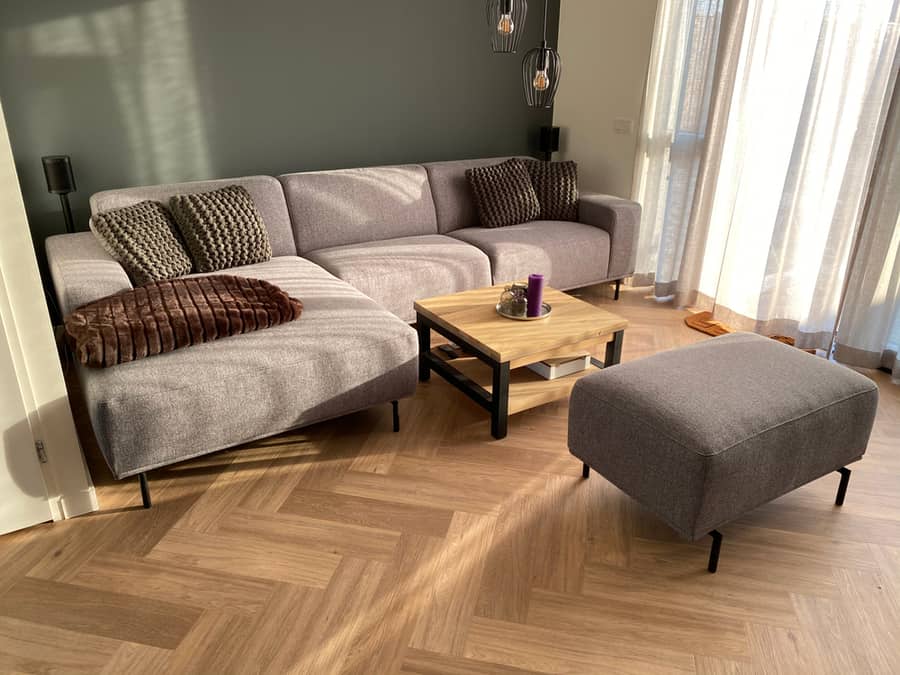
Every color has its unique impression that may not be appropriate for every space. The functionality of a room is a major determining factor of what color your floor should be.
For example, you can pick a bright-colored floor for the kids’ room, which will look great. The kids generally like vibrant colors, and a bright-colored floor will make their room more exciting.
On the other hand, a bright-colored floor in spaces like a garage or a living room would hurt your eyes and repel you from that space. Three things you need to take into account for picking a floor color are: –
- Appropriate Material: Suitable material is the first and foremost thing you should consider, not just for floor color but for flooring, as a whole.
A house with kids and pets will have to opt for flooring that camouflages scratches or stains, is durable, and has room for customization. You will have to look at hardwood and vinyl options.
Spaces with daily foot traffic need a sturdier floor which is easy to maintain and is not slippery. For such areas, you will probably prefer stone or porcelain tiles.
- Purpose of the Room: For spaces like living rooms and dining areas, you will need a floor that does not draw too much attention to itself and disrupt the context of the room.
You will not be able to have a decent conversation with your family in the living room if you keep getting distracted by the floor. Therefore, it is crucial to understand the purpose of a room.
Kid’s rooms should have a joyful and exciting appeal so that a bright-colored floor will look good in such a space. Bedrooms are spaces where you come to relax and sleep. Therefore, you need a color that has a calming impression.
- Design Elements: Floors serve as bases for your interior design. If you want to accentuate the look of your furniture, neutral-colored floors will serve as a decent background.
Neutral-colored floors highlight the design elements of the room. But, for spaces like foyers and entrance lobbies where you want the floor to be the centerpiece and have a dramatic stature, you can try bold colors and patterned floors.
You can choose between natural stone colors like marble or sandstone.
2. Size of the Room
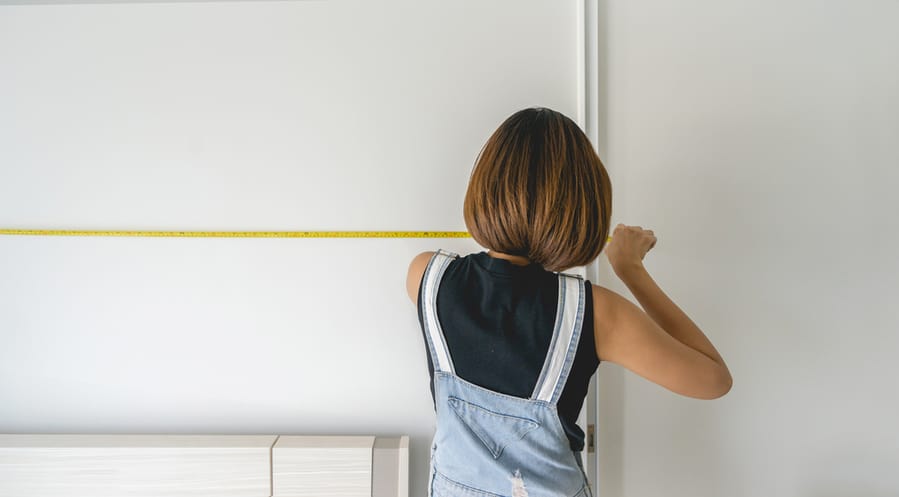
Colors can make a room look smaller or bigger. They can create the illusion you want. Light colors like white, beige, pastels, etc., will give an impression of spaciousness. Darker colors create an intimate atmosphere.
So, you can make a small room look bigger by using a light-colored floor (lightwood, white marble, beige stone, etc.). On the other hand, a dark-colored floor in a small space will make the room look stuffed and unbreathable.
Similarly, to make a big room look small, you can use dark-colored floors (darker shades of hardwood or vinyl, dark laminate, etc.) because a light-colored floor in a big room will make the room feel empty.
By this rule, your rooms will look appropriately proportioned instead of appearing too big or too small.
3. Lighting

Lighting has a massive impact on how your room looks. A well-lit room with a good amount of daylight will appear lively and open. On the other hand, you should go for a dark-colored floor for a room that has big windows and receive a lot of light.
A dark floor in a well-lit room will create a dramatic contrast and give you a sense of visual balance. On the other hand, light-colored floors in a well-lit room will make the room look too luminous and non-harmonious.
Similarly, for dim-lit rooms and rooms with small or no windows, you should go for lighter-colored floors to make the room look more bright and cheerful. A dark-colored floor in a dimly lit room will make the ambiance gloomy and upsetting.
So, picking colors contrasting with the amount of light in a room is advisable to create a balanced ambiance.
4. Ambiance You Wish To Create
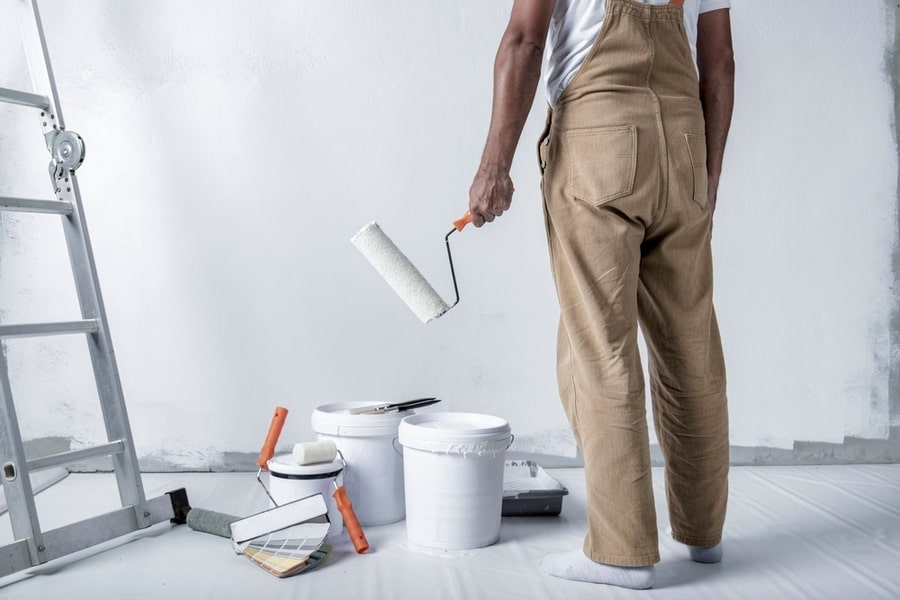
When we talk about creating the indoor environment of your choice, you must understand the vocabulary of colors. Cool-toned colors tend to give an impression of calmness.
Warm-toned colors look lively and cozy. Colors with a close affinity to nature create an illusion of a warm and rustic environment. And colors like black, navy blue, and emerald green paired with glossy finishes express luxury.
It all comes down to how you want your room to look. The feel of the room will evoke similar emotions in you later when you use that room. If you want your space to look formal, use dark and cool tones like grey, navy blue, etc.
If you wish to create a relaxing context for your room, use cool colors in lighter colors like ash grey, pastel blue, non-vibrant shades of wood, etc. To make a room appear happier and livelier, use bright colors.
Shades of yellow or beige will be perfect for such an impression. However, to create a sense of openness, use light colors like white, off-white, lighter shades of blue or grey, etc.
5. Type of Furniture
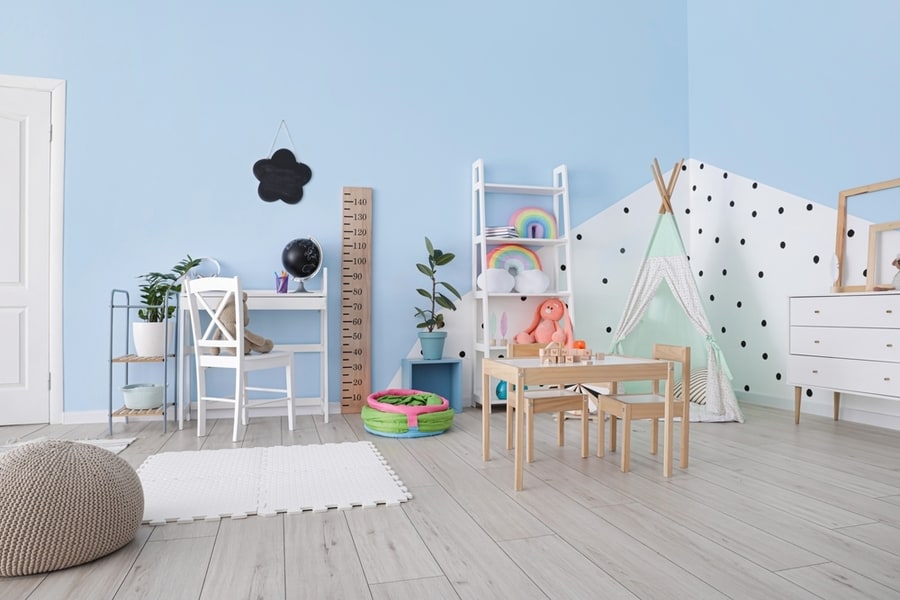
If you have a set of fancy-looking furniture in your house or a beautiful bright-colored sofa that you want to be the center of attention, you will need your floor to serve as a base and not take the spotlight off the furniture.
In such a scenario, shades of the wooden floor will serve as the perfect backdrop.
But, if your house has a lot of wooden furniture in different tones, it is best to choose a contrasting or complementary color that will break the uniformity and make your space look more charming.
A homogenous composition looks elegant in pictures, but when you have to live in a surrounding like that, it will bore and repel you.
A dramatic floor with minimal furniture and a minimal floor with a dramatic set of furniture make a great pair. The contrast gives your space a sense of balance and adds life to a dull setting.
That is why every design book preaches that there should be a central highlight for every space to make it more meaningful and valuable.
6. Material of Preference
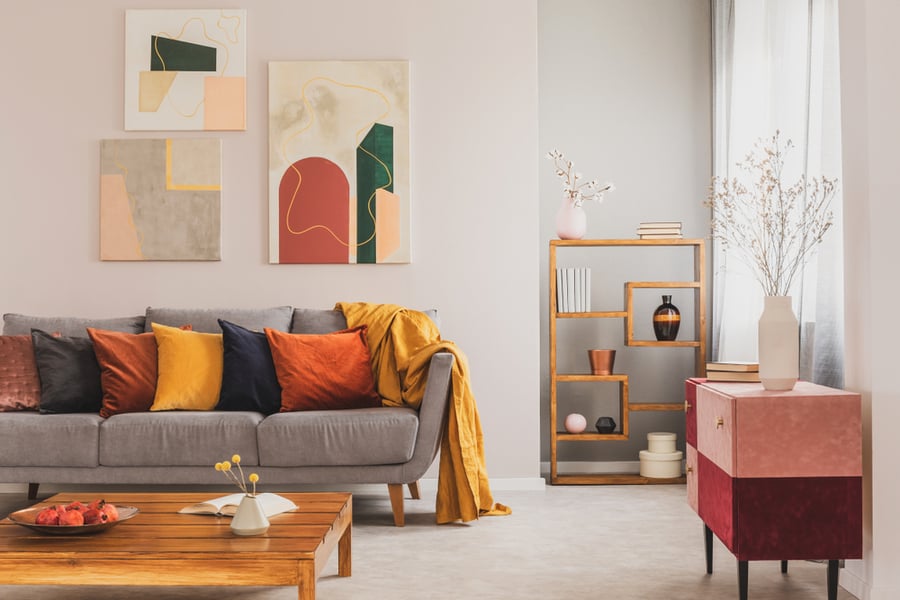
The ultimate decision maker of the color of your flooring will be the material you select for your floor. Of course, in this day and age, almost every material is available in various colors. But still, there is a limit that comes with it.
For example, you can have unlimited colors to pick from when it comes to ceramic or porcelain tiles. But hardwood or laminate will only be available in wood shades unless you choose to customize.
You will find a long list of colors to pick from. But, again, if you want a bright purple floor, you will have to switch to another material.
The selection of suitable material depends on factors like strength, cleaning, maintenance, and resistance to damage. Therefore, you will have to choose the material based on practical requirements rather than design preferences.
Once you have selected a material for your flooring, you can look at the options available in the color range of that particular material.
Conclusion
The color of your floor acts as the background of your house. Therefore, you must ensure it does not overpower the other interior elements unless it is necessary.
Colors have enough power to change the image of the space to a significant extent. Therefore, with the right floor color, you can create any illusion of your choice.
You can make your room look bigger, smaller, cozy, and bright just by changing the color of your floor.
Therefore, choosing the right color for your floor is essential so you can synchronize your surroundings with your preference.
Frequently Asked Questions
Are Darker Floors Better Than Lighter Floors?
The answer depends on what you are looking for. Lighter hardwood floors can cover up minor flaws, debris, and dirt. However, anything larger will become visible.
On the other hand, darker hardwood flooring is more suitable for larger rooms.
What Floor Color Goes With Everything?
The most popular choice is a white finish. That’s because it goes with almost everything.
However, if you do not want a completely white floor, you can also go for a light burlap-like color.
